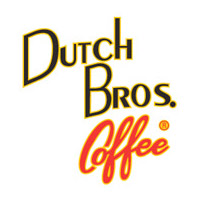Commercial Refrigeration Basics
When picking out your commercial refrigeration equipment, you need to have an idea about how much food you are going to need space for and how much food you are going to keep in your commercial refrigeration system at all times. Commercial refrigeration units come in a wide variety of storage capacities, and if you purchase a unit that is too big you will end up wasting money by keeping a larger space cold than you need. With your operating margins probably very thin, it is important to buy a commercial refrigeration unit that is just big enough. If the unit you purchase is too small, then you’ll just have to buy another commercial refrigeration unit to store all of your perishable food items.
Commercial Refrigeration Walk-ins
 A walk-in commercial refrigeration unit is just what its name implies: a refrigerator big enough to walk into. It can be as small as a closet or as large as a good-size room, but its primary purpose is to provide refrigerated storage for large quantities of food in a central area. Experts recommend that your operation needs a commercial refrigeration walk-in when its cold storage needs exceed 80 cubic feet, or if you serve more than 250 meals per day. Once again, you’ll need to determine how much you need to store, what sizes of containers the commercial refrigeration storage space must accommodate, and the maximum quantity of goods you’ll want to have on hand at any time.
A walk-in commercial refrigeration unit is just what its name implies: a refrigerator big enough to walk into. It can be as small as a closet or as large as a good-size room, but its primary purpose is to provide refrigerated storage for large quantities of food in a central area. Experts recommend that your operation needs a commercial refrigeration walk-in when its cold storage needs exceed 80 cubic feet, or if you serve more than 250 meals per day. Once again, you’ll need to determine how much you need to store, what sizes of containers the commercial refrigeration storage space must accommodate, and the maximum quantity of goods you’ll want to have on hand at any time.
The most economical way to use a commercial refrigeration walk-in is to equip it with shelves, organized in sections. Exactly how much cold storage area do you need? The easiest formula is to calculate 1 to 1.5 cubic feet of commercial refrigeration walk-in storage for every meal you serve per day. To determine the cubic feet of storage area determine how much liner footage you have of shelf space (measure along the front), multiply this by the number of shelves and the depth of the shelves, then measure how much vertical space there is between each shelf. When you multiply all these numbers together you’ll have the cubic feet of commercial refrigeration storage available in your walk-in.
How Many Commercial Refrigeration Units Do You Need?
 For some food service operations you might also need more than one commercial refrigeration unit if you need to store perishable items at various temperatures. For instance, you’ll need one for produce (41 degrees Fahrenheit), one for meats and fish (33 to 38 degrees Fahrenheit), and one for dairy products (32 to 41 degrees Fahrenheit). If this is your situation, then determining the commercial refrigeration storage you need is a bit more complex, but nothing that can’t be determined with a little planning.
For some food service operations you might also need more than one commercial refrigeration unit if you need to store perishable items at various temperatures. For instance, you’ll need one for produce (41 degrees Fahrenheit), one for meats and fish (33 to 38 degrees Fahrenheit), and one for dairy products (32 to 41 degrees Fahrenheit). If this is your situation, then determining the commercial refrigeration storage you need is a bit more complex, but nothing that can’t be determined with a little planning.
Modern commercial refrigeration walk-ins sometimes offer a frozen-food section in addition to the regular cooler space. There are pros and cons to this concept. It may ease the load on the freezer, because it’s already located inside a chilled airspace; but it also can’t help but reduce overall usable space, because it requires a separate door. You can also order your walk-in with a separate, reach-in section that has its own door and shelves. Although this may save the cost of purchasing a separate reach-in, some critics claim that a walk-in is not designed to do a reach-in job, such as storing uncovered desserts. Do you really want them in the same environment as cartons of lettuce and other bulk storage items? There may be cleanliness or food quality factors to consider.
Smart Features of Commercial Refrigeration
Other smart features to consider besides the size of your commercial refrigeration walk-include the following: a thermometer, a monitoring and recording system that keeps a printout of refrigeration temperature or downloads to a computer, and heavy-duty plastic strip curtains inside the door. By using technology to monitor and control your commercial refrigeration unit, you’ll end up saving money in the long run because you won’t be constantly manually adjusting the commercial refrigeration equipment.









